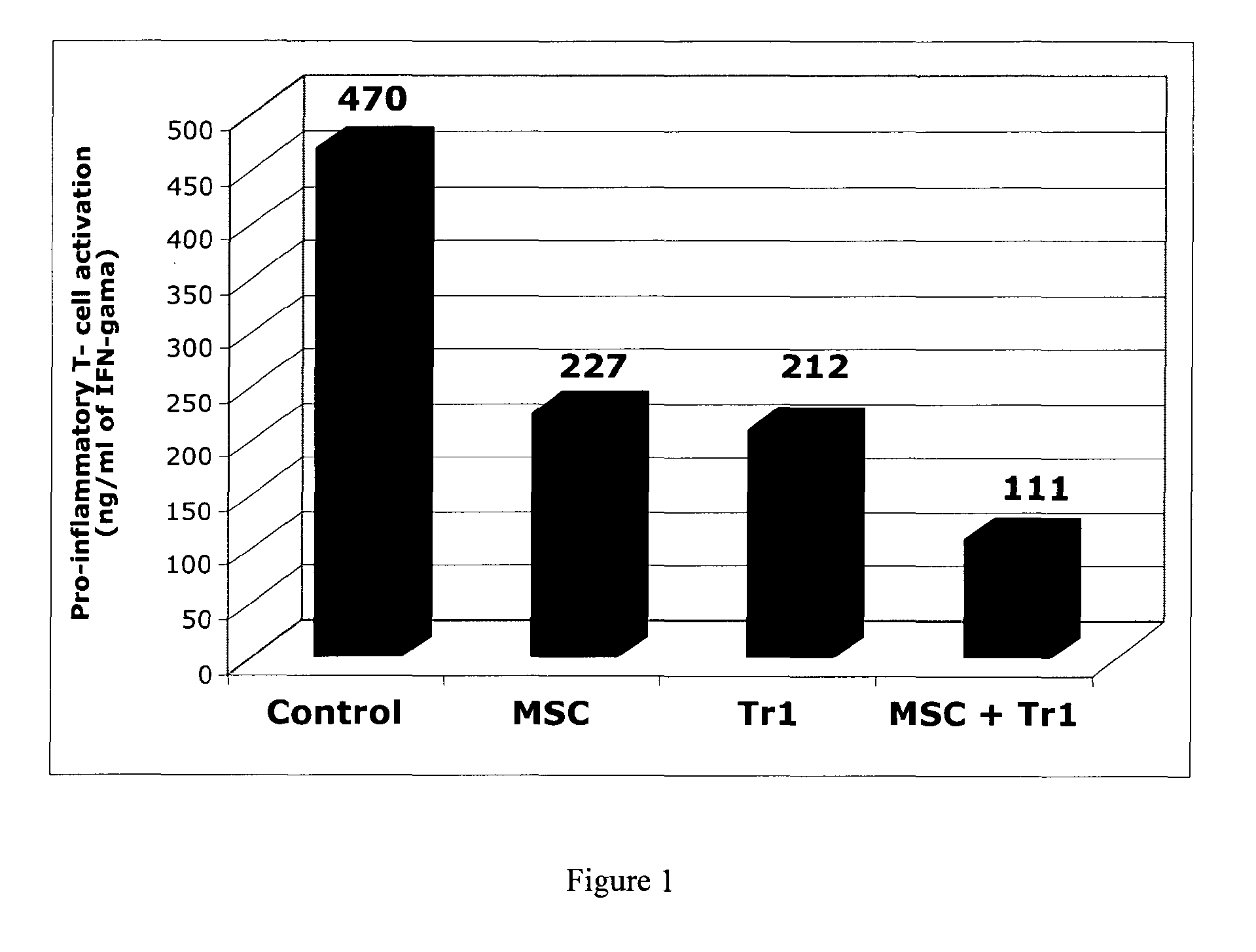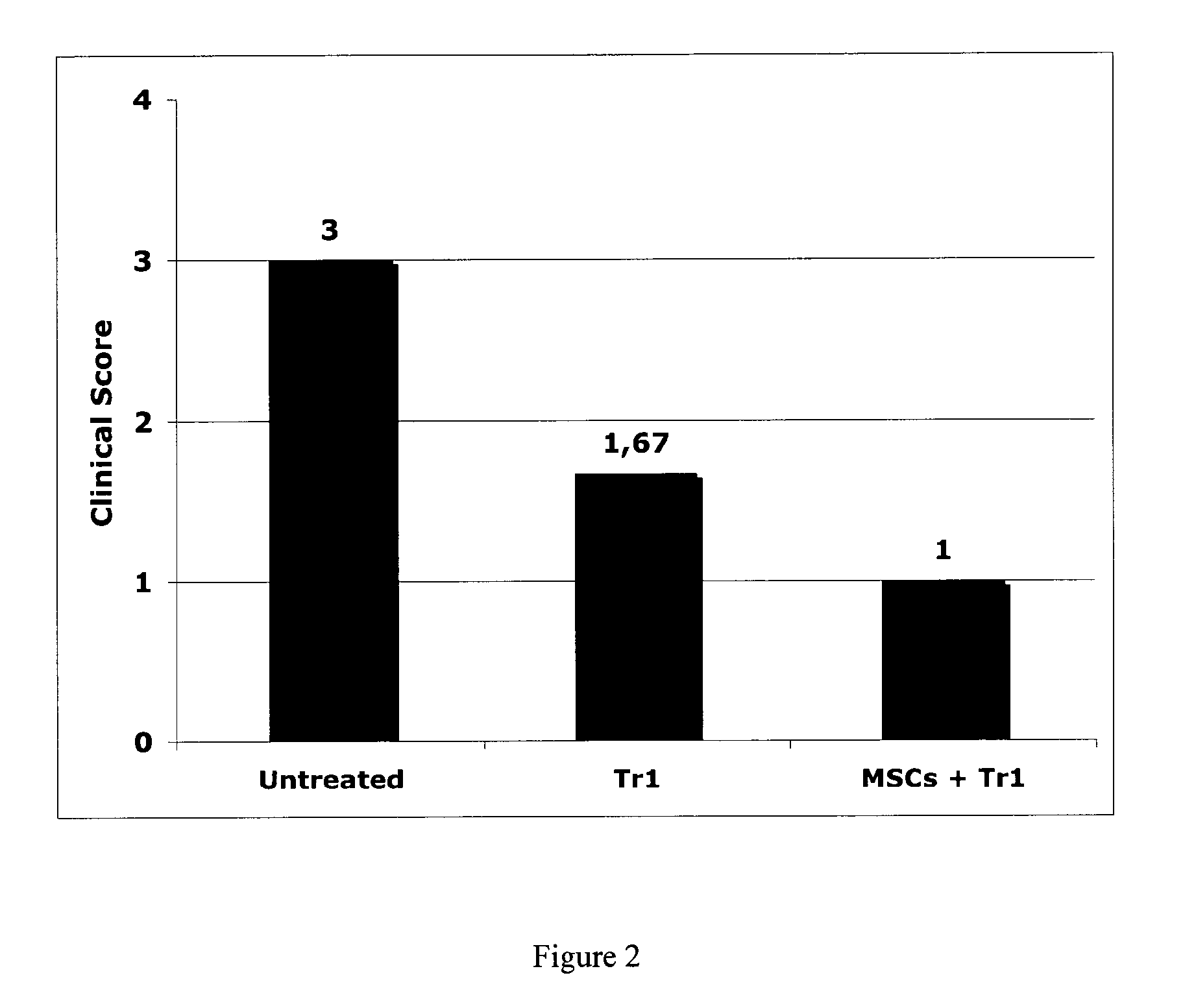Tr1 cells, mesenchymal stem cells and uses thereof
a technology of mesenchymal stem cells and tr1 cells, which is applied in the field of tr1 cells and mesenchymal stem cells, can solve the problems of general suppression of the immune system with high risk of infection and neoplasia, adverse side effects, and autoimmune diseases, and achieve the effect of promoting tissue regeneration and promoting angiogenesis
- Summary
- Abstract
- Description
- Claims
- Application Information
AI Technical Summary
Benefits of technology
Problems solved by technology
Method used
Image
Examples
example 1
Preparation of MSCs
[0130]Mesenchymal stem cells were derived from the stroma-vascular fraction of the adipose tissue of Balb / c mice. Adipose tissue was digested with 0.1% collagenase for 30 minutes and filtered through a 70μ mesh. Adherent cells were cultured in RPMI medium containing 10% FCS and 10% horse serum supplemented with glutamine and penicillin and streptomycin. Frequently, cells were monitored for their capacity to differentiate in both adipocytes and osteoblasts lineages.
Preparation of Tr1 Cells
[0131]Ovalbumin specific Tr1 cells were differentiated from naïve CD4+ T lymphocytes from DO11-10 ovalbumin specific TCR transgenic mice after activation with ovalbumin peptide 323-339 and IL-10 in the presence of irradiated syngeneic antigen presenting cells. Cells were then clones by limiting dilution in order to obtain monoclonal population of ovalbumin specific Tr1 cells. Cells used in experiment 1 and 2 were derived from the culture of a Tr1 clone.
Activation Assay of T Cells
[...
example 2
[0135]BALB / c mice were treated with Dextran Sodium Sulfate (DSS, 5% in drinking water) to induce acute colitis. Group of mice were left untreated or treated intravenously at day 1 with 106 ovalbumin specific Tr1 cells with or without adipose tissue derived MSCs (0.5×106 / mouse). After 7 Days, clinical signs of mice were evaluated based on the following scoring:[0136]0—No clinical signs[0137]1—Weight loss[0138]2—Weight loss+mild Diarrhea[0139]3—Weight loss+severe Diarrhea[0140]4—Weight loss+severe Diarrhea+blood in the feces
[0141]Results show that MSCs co-administration improves the efficacy of Tr1 cell therapy in this model of colitis (FIG. 2).
PUM
| Property | Measurement | Unit |
|---|---|---|
| Composition | aaaaa | aaaaa |
Abstract
Description
Claims
Application Information
 Login to View More
Login to View More - R&D
- Intellectual Property
- Life Sciences
- Materials
- Tech Scout
- Unparalleled Data Quality
- Higher Quality Content
- 60% Fewer Hallucinations
Browse by: Latest US Patents, China's latest patents, Technical Efficacy Thesaurus, Application Domain, Technology Topic, Popular Technical Reports.
© 2025 PatSnap. All rights reserved.Legal|Privacy policy|Modern Slavery Act Transparency Statement|Sitemap|About US| Contact US: help@patsnap.com


